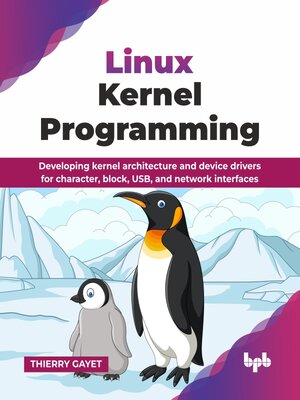Linux Kernel Programming
ebook ∣ Developing Kernel Architecture and Device Drivers for Character, Block, USB, and Network Interfaces
By Thierry Gayet

Sign up to save your library
With an OverDrive account, you can save your favorite libraries for at-a-glance information about availability. Find out more about OverDrive accounts.
Find this title in Libby, the library reading app by OverDrive.



Search for a digital library with this title
Title found at these libraries:
| Library Name | Distance |
|---|---|
| Loading... |
Linus Torvald released the first version of a kernel in 1991, inspired at the time by both proprietary Unix and the Minix system. Thirty-four years later, this system has evolved with stability and robustness, making it almost indispensable for the DevSecOps community. The Linux kernel forms the robust core of countless systems, from embedded devices to vast data centers, driving unparalleled power and flexibility. This book is your essential guide to deeply understanding this fundamental component and mastering the art of developing high-performance kernel-level code
This book meticulously details the kernel's history, architectural evolution, and custom build processes. You will master device driver fundamentals, distinguishing user from kernel space, and understanding the Linux Device Model (LDM). It explores Linux Security Modules, intricate kernel memory management, and various vital communication interfaces like I2C, SPI, SERIAL, PCI, and RTC. The guide concludes with task/process management, real-time concepts, and essential kernel debugging and profiling.
By the end of this book, you will be well-equipped to confidently develop, optimize, and debug kernel-level code. This empowers you to build custom Linux systems, craft efficient device drivers, and troubleshoot complex issues, ready to tackle advanced Linux system programming challenges. You will also be able to better understand this system and develop your own drivers or low-level developments for it.







